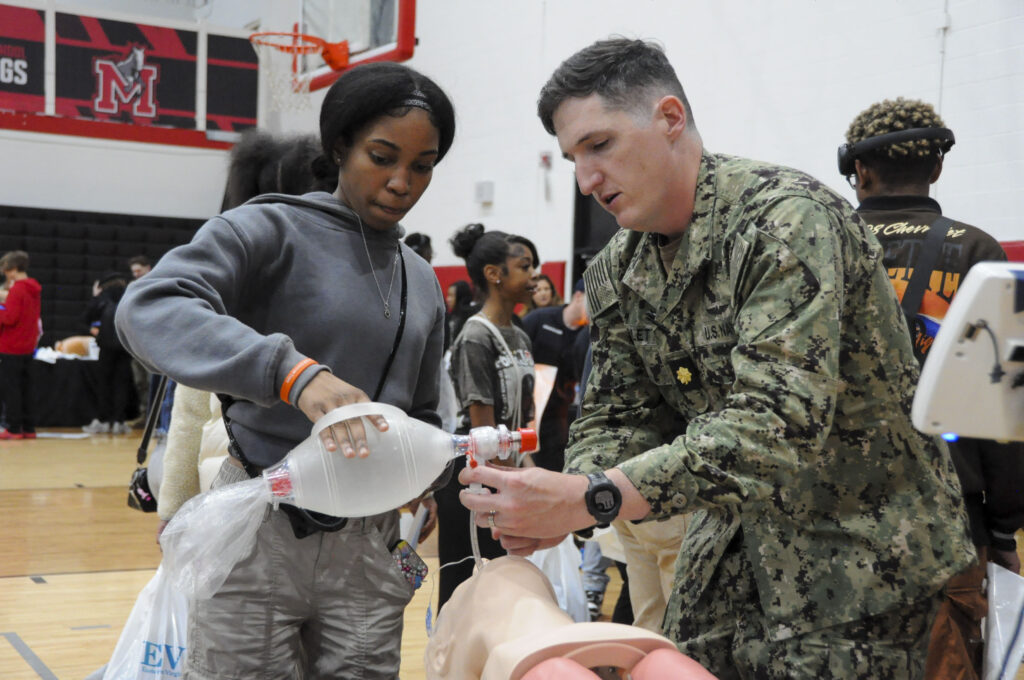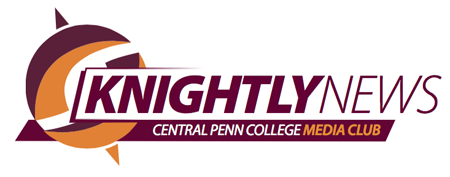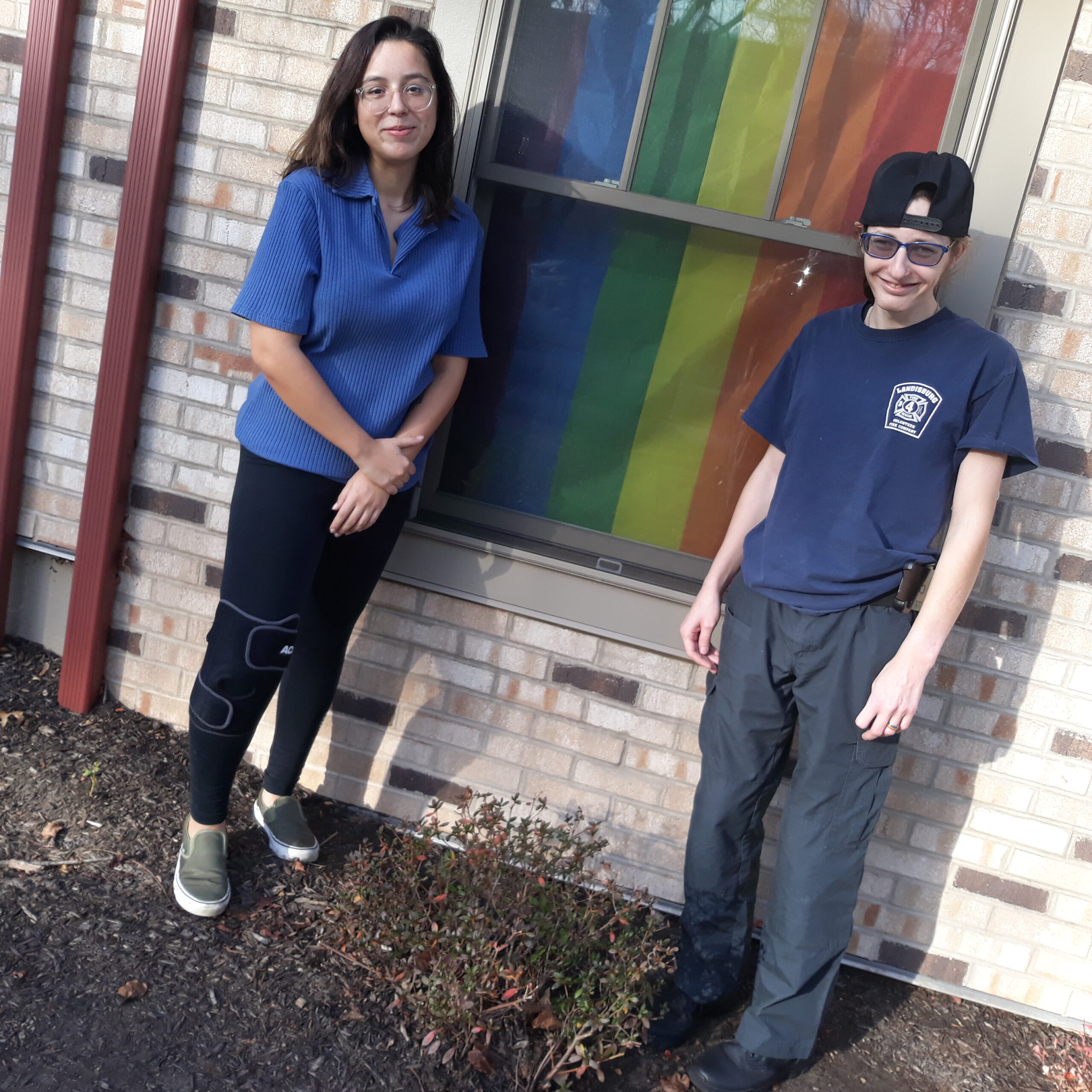Central Penn tries to meet needs of student veterans
Low vet population means less demand for resources, but the college makes connects for these students
Editor’s note: These two stories that follow are about financial and other aid for U.S. veterans. Knightly News reporters who are veterans wrote the stories. The first story presents a snapshot of veteran enrollment at the college and the second provides a short, detailed overview of benefits of the GI Bill.

By Bret Saveleski
Knightly News Reporter
bret.saveleski@mymail.centralpenn.edu
Central Penn College has a veteran student population smaller than the national average and limited resources available to veterans, mainly because of that group’s low enrollment numbers.
The college has many unique characteristics, such as accelerated degree programs, small class sizes, options for online and in-person learning, and a reputation for being a career-focused school.
These qualities make CPC an appealing choice for nontraditional students.
Even so, the school has a low population of veteran students, because of its identified recruiting profile in recent years.
According to Lead Success Coach and Director of Veteran and Athletic Support Megan Kaiser, only 15 of the school’s 822 students as of Week 5 during the winter 2024 term were veterans.

PORTSMOUTH, Va. (April 23, 2024) Staff members from the Navy and Marine Corps Force Health Protection Command (NMCFHPC) and Sailors from Naval Medical Center Portsmouth (NMCP) attend a Science, Technology, Engineering, and Math (STEM) event, April 23, 2024, at Manor High School in Portsmouth, Virginia. During the event, Lt. Cmdr. Thomas Sublett, a resident physician with NMCP instructs a student on how to provide air to a patient with a blockage at the airway station. The event was hosted to educate and inspire students about STEM studies by allowing them to get hands on with some of the equipment. (Navy photo by Desmond Martin)
That figure equates to only 1.8 percent of the student body having served in the armed forces, which is roughly half the national average, according to the Veterans Administration. That translates to a lower number of resources available to veterans at Central Penn, but college staff make the effort to connect student veterans with the information and support they need.
Kaiser said the college’s veteran numbers are low because admissions efforts have focused in recent years on traditional-aged college students, a strategy that includes a considerable effort to bring students to campus directly from high school, particularly for athletics, to campus. She said that if the school’s veteran enrollment increased, more resources would be offered to meet their needs.
No plan seems to be in place to recruit more veterans, because of the focus on traditional-age students, who typically have not had the opportunity to serve in the military.
“No, they have not,” Kaiser said when asked whether the school looks for veterans in its recruiting efforts. “To the best of my knowledge, they have not identified that as one of our focus populations.”
This is not due to a lack of veterans in the area. Pennsylvania has more than 800,000 veterans living in the state, which is 8.66 percent of the state’s population.
The school also has limited resources for these students to use.
“Not enough,” Kaiser said about resources. “We have our school-certifying official who answers all the money questions, and then I’ve been building a network
with community resources so that I can refer students when necessary.”
CPC has a library database veterans can use to find literature pertaining to common issues they may be facing, such as transitioning to civilian life, mental health and employment.
The Veterans Administration’s website is also useful to veterans.
Saveleski is a veteran of the U.S. Navy, in which he served on a submarine.
The GI Bill simplified
Its array of benefits can confuse people who want to use it.
Central Penn staff who specialize in explaining veteran benefits can help.

By Rodney Edwards
Knightly News Reporter
rodney.edwards@mymai.centralpenn.edu
For student veterans who need clarification about how the GI Bill works, some Central Penn staff recently zeroed in on some particulars on how to effectively use this boon for people who have served in the U.S. armed forces.
The many chapters and uses of the bill for education during active-duty and after discharge from the service can make understanding the bill a challenge.
Some history and details
In 1944, the Servicemen’s Readjustment Act was passed to support World War II veterans. This law created the GI Bill, a program that provides educational and training benefits to U.S. service veterans.
The GI Bill has different sections called chapters. For example, Chapter 33 is the Post-
9/11 GI Bill, and Chapter 30 is the Montgomery GI Bill.
Only one chapter can be used to earn a degree. Veterans can apply online through the Veterans Administration website. It takes 30 days on average for the VA to process education claims. Once a claim has been processed, veterans receive a certificate of eligibility (COE), which shows all the benefits to which the veteran is entitled.

Using the bill
To receive the full benefit of the GI Bill, veterans must be enrolled as full-time students and registered for at least one on-ground class.
People serving in the armed forces can use any chapter of the GI Bill but will not receive the monthly housing allowance. Active service members can instead apply for tuition assistance while in the service and use the GI Bill when discharged from service.
Chapter 33
Chapter 33, the Post-9/11 GI Bill, was enacted in 2008 and is the most used GI Bill. This chapter is available to veterans who have served 90 aggregate days on active duty. It operates on a tiered system. For example:
- If the veteran has 90 days of active-duty service, then the Post-9/11 GI Bill covers 40 percent of tuition and fees.
- If the veteran has three years of active duty, it covers 100 percent of tuition and fees.
- If the veteran served a length of time past 90 days but fewer than three years of active duty, then different percentages of tuition and fees will apply.

Payments are made directly to the college, university or other approved institution, and the veteran will receive a monthly housing allowance.
The Post-911 GI Bill also offers a book stipend.
Chapter 30
This chapter, the Montgomery GI Bill, covers up to 36 months of education benefits.
Payments under Chapter 30 are made directly to the veteran.
The Montgomery GI Bill can be converted to the Post-9/11 GI Bill.
Chapter 1606
Chapter 1606 for the Reserves offers less than the Post-9/11 GI Bill.
Central Penn College participates in the Yellow Ribbon Program, which assists veterans whose schooling exceeds the amount the GI Bill covers. This occurs when veteran students take more than four classes, and the amount exceeds the GI Bill’s annual cap.
The Yellow Ribbon Program kicks in to assist with the cost veterans would owe the college until the end of the year.
If you haven’t served
Traditional students intrigued by the GI Bill’s benefits and are considering a military career should contact a recruiter in the branch of service in which they’re interested.
The websites of the Army, the Navy, the Marines, the Air Force, the Coast Guard and the Space Force have information about the service branches and how to join.
Vet questions
Veterans with questions regarding the GI Bill can contact Lead Success Coach and Director of Veteran and Athletic Support Megan Kaiser, at megankaiser@centralpenn.edu, and Financial Planning Coordinator and Military Benefits Coordinator John Steindel, at johnsteindel@centralpenn.edu, for information on how the GI Bill works and how to use it at Central Penn.
Edwards is a veteran of the U.S. Air Force, for which he was an aircraft-engine mechanic. He served in Afghanistan.




